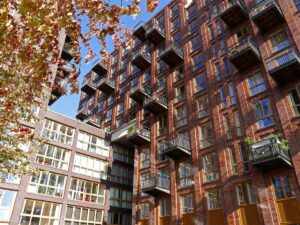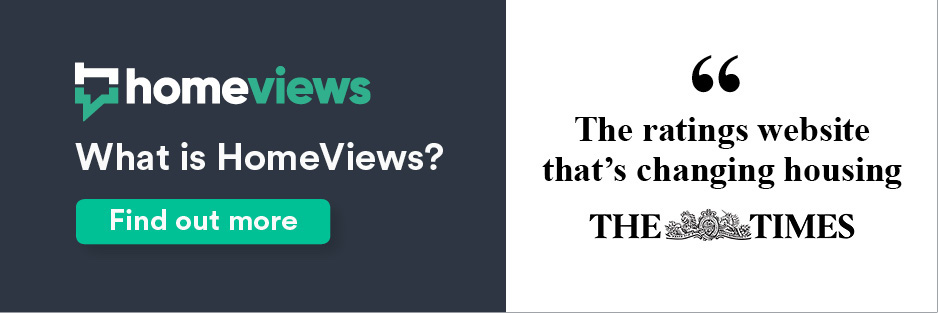If you own a leasehold property and aren’t satisfied with the property management company, what can you do about it? The quality of a building’s management is one of the biggest factors for how reviewers on HomeViews rate a building overall. Understanding your ‘right to manage’ could be the answer. Discover what right to manage is and how you may be able to use it to improve the management of your apartment building.
There are around 4.5 million leasehold properties in the UK, most of them owner-occupied or privately rented flats. Disputes with property management companies that run the buildings on behalf of the freeholder are common. If the service charge is too high, or the quality of provided service is too low, leaseholders can use their ‘right to manage’ to solve this problem head on. We answer some frequently-asked questions below.
FAQs
What does right to manage mean?
Right to manage is a process that lets leaseholders of individual properties take over the management of the wider building. This happens when enough of the leaseholders are unhappy with the current management and agree to take it on themselves. (For a full explanation of how leaseholds work, see our guide on freehold vs leasehold.)
What does a property management company do?
A property management company is responsible for taking care of all the communal areas and structure of the building that contains the leasehold properties. This includes the upkeep, repair and maintenance works for the roof, hallways, lifts, lobbies, communal gardens and so on.
Property management companies organise all of these works on behalf of the owner of the building. They then issue the service charge to all the leaseholders, who split the costs evenly between them. See our guide to service charges for more details on how this works.
How do I get the right to manage?
You can claim the right to manage your building by setting up an RTM company with your fellow leaseholders. This Gov.uk guide sets out exactly how the process works and what you need to do to qualify. The main requirements are that at least two thirds of the flats in the building are leasehold, and at least 50% of the leaseholders in the building agree to form the RTM company.
Does the building owner have to agree to leaseholders’ right to manage?
The owner of the building does not have to consent to the leaseholders activating their right to manage. As a leaseholder, you can claim your right to manage without having to prove that the management of the building was badly handled.
Usually, all you will need to do is to notify the building owner that you want to set up an RTM company. However, the building owner does have the right to be a member of that company.

What are my responsibilities as part of a right to manage company?
If you are successful in setting up a right to manage company, you and your fellow leaseholders are now responsible for managing the building. This means that you now have to do everything that the property management company did. Mostly, this means organising contractors to carry out all necessary repairs, cleaning and any major works that need doing.
Your other main responsibility will be to meet with the other RTM company members to vote on issues. Most decisions will be about choosing suitable contractors for necessary works.
What are the benefits of right to manage?
The main benefit of right to manage is that you gain greater control over the costs of running the building. You may also save money, since you don’t have to pay for the services of a property management company.
Additionally, by forming an RTM company you can choose and change contractors whenever you like. If you aren’t satisfied with their work, you can simply stop using their services and look for another company.
Another benefit is that any decisions on works can be made and carried out more quickly. A property management company usually manages lots of different buildings; you and the other RTM company members only need to concentrate on your building.
What are the disadvantages of right to manage?
The biggest disadvantage of right to manage is that it can take up a lot of your time. You and the other RTM company members will need to meet on some sort of semi-regular basis to vote on decisions and discuss issues. You will also need to appoint a director who organises all the works, pays contractors and inspects their efforts.
If you are the director, running the building yourself can come with a lot of stress. Deciding on how to invest funds and direct ongoing works is a difficult task. It may even cause disagreements or arguments with other leaseholders or the building owner.
As an RTM company, you can choose to hire a managing agent to take care of all the works. This takes all the time-consuming work off your shoulders, but comes with a drawback of added costs. The difference here is that you can still negotiate service levels with the managing agent – plus you still make all the major decisions, the managing agent just carries them out.
Can I change my property management company instead?
If you don’t want to activate your right to manage, you can try to change your building’s management property company instead. This is done through a tribunal, where you can dispute service charge levels and other leaseholder disputes.

Can a right to manage company buy the freehold?
Establishing a right to manage company doesn’t give you the opportunity to buy the freehold. RTM companies give you the right to manage and make decisions over maintenance and everyday building management. However, the legal structure of the company, and the Articles of Association the company must adopt, don’t provide for buying the freehold of the building.
Who can be a member of a right to manage company?
All qualifying leaseholders can be a member of a right to manage company. If you are a leaseholder in an apartment building, you have a right to be a part of the company. There’s no way to exclude you from joining. The landlord of the building also has a legal right to be a member of the RTM company.
Who can be a director of a right to manage company?
The company must have at least one director, though sometimes they have up to five directors. Directors are typically residents of the building, but there’s no legal requirement for them to be. Sometimes directors may be relatives of residents. Usually, directors of an RTM company don’t get paid, but they are responsible for upholding the legal responsibilities of the company.
Are right to manage and resident’s management companies the same thing?
The names right to manage (RTM) and resident’s management company (RMC) are sometimes used interchangeably. They are, however, two different types of organisation. RTM companies assume the legal right to take over the managements of the freehold of a property. RMCs, on the other hand, provide different legal powers, granting the residents of the property control over service charge expenditure, managing it on behalf of the leaseholder but not taking it over entirely.
Is right to manage a good idea?

Right to manage is a good idea if you are unhappy with your building’s current management and think you can do better. The process of creating a right to manage company is fairly straightforward, and running one successfully can save you money.
Right to manage will definitely give you much more control over how your building is managed. However, this does come at a cost – namely your own time and energy. You’ll need to decide whether you, and your fellow leaseholders, are willing to take on the administrative burden of the whole building.
If you have a good relationship with your neighbours, right to manage can make a positive difference. While you have to put in some of your own time, the benefits can quickly make it a worthwhile trade-off.
Are right to manage regulations changing?
January 2024 Update: In November 2023, The Leasehold and Freehold Reform Bill 2023-24 was introduced to the House of Commons. It is a wide-ranging bill designed to make things fairer, easier and more transparent for leaseholders. One of its main measures is to make it both easier and cheaper for leaseholders to take over the management of their building. The consultation period on the bill closed on 17th January 2024, and the report stage scheduled for 27th February.
July 2024 Update: After becoming law in May 2024, the Leasehold and Freehold Reform Act has been in place for two months now. Despite last-minute watering down elements, the bill has kept some of its original provisions regarding right to manage. The main provisions include reductions of costs and greater transparency in the process of making an RTM claim. A specific change enabled by the Act is that, previously, leaseholders in mixed used buildings couldn’t take over its management or buy the freehold if more than 25% of the floor space was commercial – this limit has been raised to 50%. This will enable more homeowners to access right to manage.

HomeViews is the only independent review platform for residential developments in the UK. Prospective buyers and tenants use it to make an informed decision on where to live based on insights from carefully verified resident reviews. Part of Rightmove since February 2024, we’re working with developers, house builders, operators, housing associations and the Government to give residents a voice, recognise high performers and to help improve standards across the industry.




















